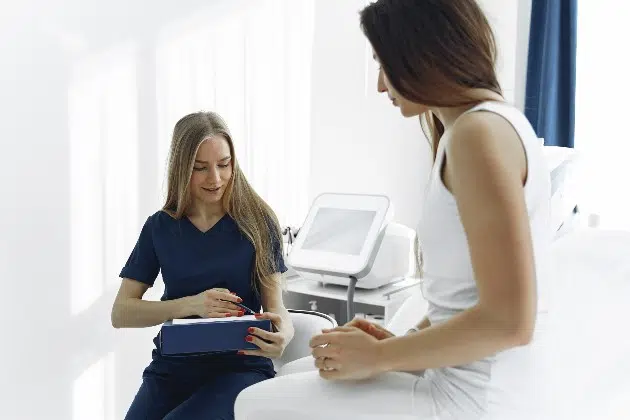(KNSI) – The Minnesota Department of Health reports that new cases of some sexually transmitted infections decreased in the state from 2019 to 2020, but that decrease could be caused by the reduction in STI testing during the COVID-19 pandemic.
According to the MDH data, STI cases in general among Minnesotans fell 1 percent between 2019 and 2020. The state saw a 27 percent increase in new gonorrhea cases, yet chlamydia and syphilis cases decreased by 11 and 3 percent, respectively. New HIV diagnoses declined 18 percent last year.
While those decreases may look good on paper, CentraCare physician assistant and HIV specialist George Froehle says the rise in gonorrhea cases shows that the decline in other types of STIs likely isn’t due to people being less sexually active during the pandemic. He says many things contributed to a decrease in STI screening during 2020, like providers being advised by the CDC to give priority to treating symptomatic STI cases.
“We were also supposed to try to treat people without them coming into clinics when possible,” Froehle said. “We did see a decrease, according to MDH, by about 11 percent for chlamydia, but chlamydia is an STI that’s often not symptomatic. It’s mostly found on routine tests, like Pap smears for women. That does sort of explain where we saw this increase in gonorrhea by 27 percent, because gonorrhea is pretty symptomatic when people have it.”
Froehle adds that in the early months of the pandemic, STI testing supplies were being reallocated for use in COVID-19 testing. Also, public health workers who would typically call the sexual contacts of an STI patient to anonymously inform them that they could have been exposed were often reassigned to do COVID-19 exposure contact tracing instead.
“All of those things combined really added up,” Froehle said.
Froehle says if sexually active people haven’t gotten screened for STIs in the past year or delayed other health care, like pelvic exams, he encourages them to make an appointment with their provider.
“Clinics are open, they’re happy to see you, our testing capabilities are back up to full speed,” Froehle said. “We encourage everyone to come in and get tested and screened, even if you don’t have symptoms because often STIs can be asymptomatic.”
Since many people got tested for COVID-19 at least once during the pandemic, even if they felt OK, Froehle says he hopes that process will help break down some stigma and barriers for regular STI testing.
“I hope that COVID has normalized the process of going and getting tested, even if you don’t think you have symptoms, and also that it maybe normalizes some of our preventative vaccines that we have,” Froehle said. “For patients’ reassurance, STIs like chlamydia and gonorrhea and syphilis are curable. [After] learning that you have the infection, we can cure these for you within a week.”
A visit with a health care provider could also help people who are more at risk of contracting HIV start using preventative medication like pre-exposure prophylaxis, or PrEP. Froehle says this medication is sometimes recommended to patients who have contracted gonorrhea or syphilis.
“We have seen outbreaks in Minneapolis and Duluth around HIV and hepatitis C co-infections related to people who are sharing needles, and we have seen an uptick in opioid use with the pandemic and people staying at home, so anyone in that sort of category we also encourage to come in and get tested and screened and potentially provided with PrEP,” Froehle said.
The MDH says HIV continues to impact certain populations disproportionately; people assigned male at birth account for 84 percent of Minnesota’s confirmed HIV cases, and 69 percent of new cases affect people of color.










